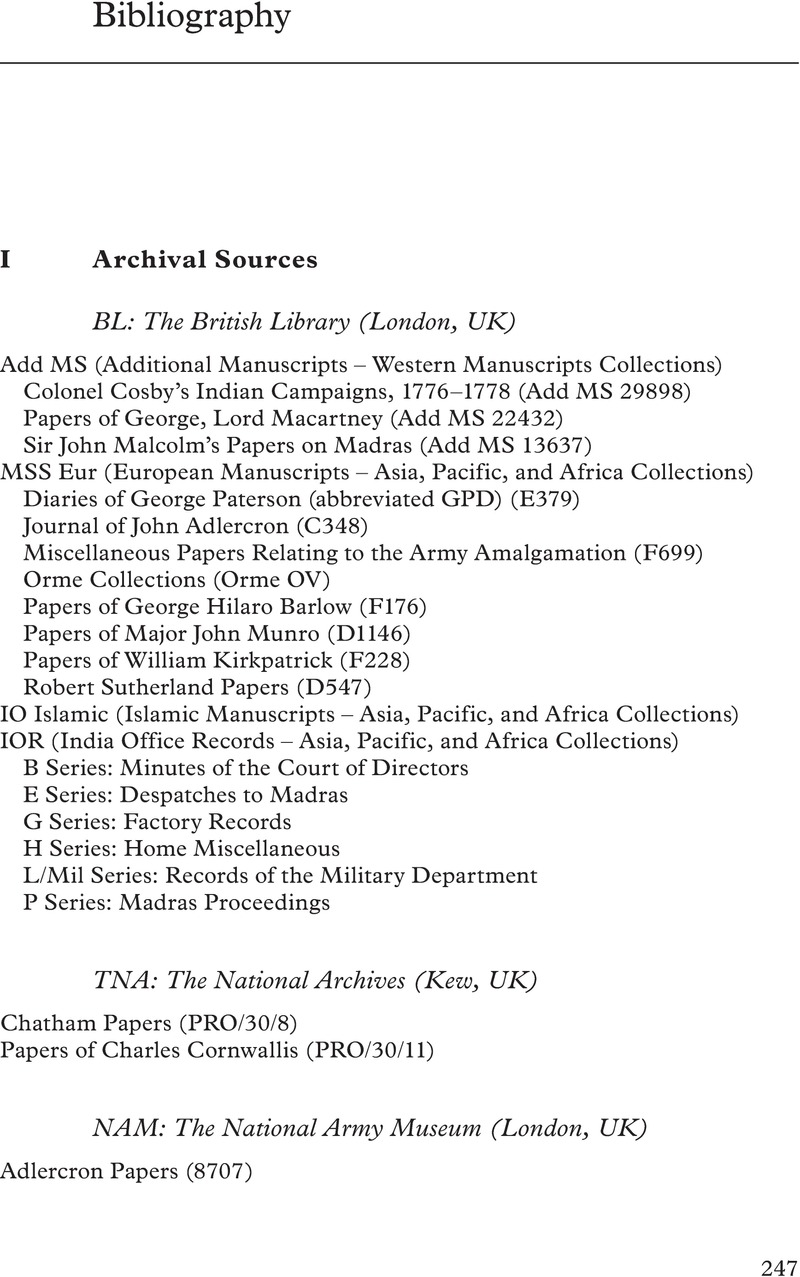Book contents
- The Company’s Sword
- Critical Perspectives on Empire
- The Company’s Sword
- Copyright page
- Contents
- Figures
- Maps
- Acknowledgments
- A Note on Spelling and Place Names
- Maps
- Introduction
- 1 Forging the Sword
- 2 The Sepoy’s Oath
- 3 Mercenaries, Diplomats, and Deserters
- 4 The Other Revolution of 1776
- 5 The Empire Preserved
- 6 Stratocracy
- 7 Breaking the Officers’ Sword
- Conclusion
- Bibliography
- Index
- References
Bibliography
Published online by Cambridge University Press: 08 September 2022
- The Company’s Sword
- Critical Perspectives on Empire
- The Company’s Sword
- Copyright page
- Contents
- Figures
- Maps
- Acknowledgments
- A Note on Spelling and Place Names
- Maps
- Introduction
- 1 Forging the Sword
- 2 The Sepoy’s Oath
- 3 Mercenaries, Diplomats, and Deserters
- 4 The Other Revolution of 1776
- 5 The Empire Preserved
- 6 Stratocracy
- 7 Breaking the Officers’ Sword
- Conclusion
- Bibliography
- Index
- References
Summary

- Type
- Chapter
- Information
- The Company's SwordThe East India Company and the Politics of Militarism, 1644–1858, pp. 247 - 275Publisher: Cambridge University PressPrint publication year: 2022

